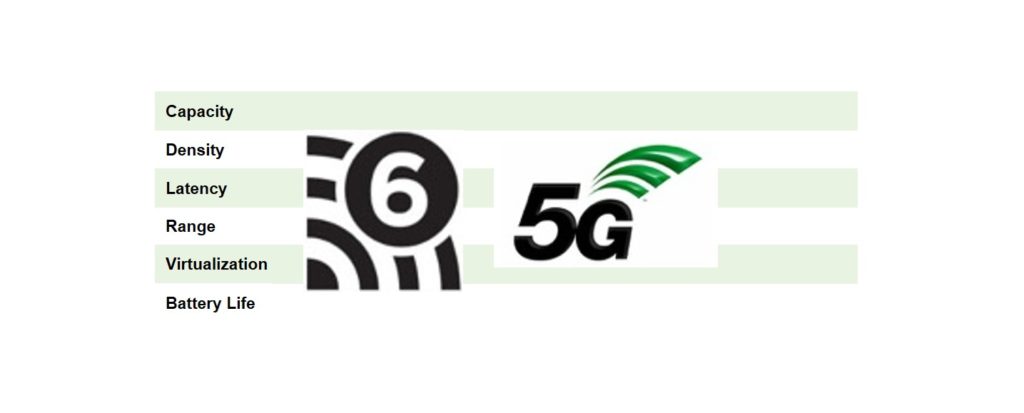Wi-Fi 6 and 5G have both evolved by using the latest technologies and, in some cases, leveraging the same core technologies. Being similar, why shouldn’t one replace the other? That’s a very natural question. Your arm muscles and your leg muscles are made of very similar tissues, but both of these muscles serve a very different purpose. They’re designed to do different things. And it’s very similar in Wi-Fi 6 and 5G.

Different Technology, Different Purpose
Let’s compare the details. Capacity is probably the most talked about characteristic. Both 5G and Wi-Fi 6 now support 1024-QAM, MU-MIMO or FDMA technologies. So why shouldn’t their speed be similar? The real difference lies in the operating frequencies. Wi-Fi 6 operates on the 5 to 7 GHz bands. 5G operates on mid, low and high bands going up to millimeter wave. In millimeter wave, there is plenty of spectrum available, and the system has much wider channels. In Wi-Fi, the channel size is limited to 80 MHz. In 5G, you can have GHz channels. So, that’s why the capacity will be more when you’re using millimeter wave.
Application Matters
Of course, there is a lot more to each of these fixed wireless technologies. Before deciding on a technology, it is vital to know the application. This will inform the desired capacity along with the needs for user density, transmission latency, range, virtualization and battery life. At Cambium Networks, we understand the details of each technology and the applications where connectivity is needed.
Like arm and leg muscle tissue, each technology has strengths that can be leveraged to deliver business outcomes in a selected use case. Furthermore, the wireless network composed of multiple technologies can be easily managed as one unified network in the cloud.
View the full recorded video of Vibhu’s presentation: “How Will Wi-Fi 6 and 5G Coexist?”